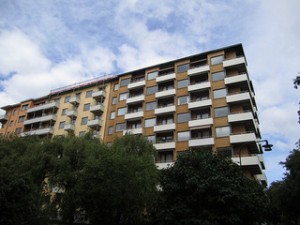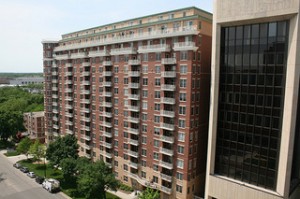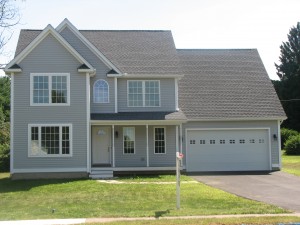There are three types of common interest communities in most states. They are condominiums, planned communities and cooperatives. Each state has its own version of these but the descriptions provided below are similar throughout the states. This article will be about the basics of homeownership of each.
Cooperatives
 |
| Cooperative |
I’ll start with cooperatives first to get it out of the way. This is the one of that I know the least about for two reasons: (1) there aren’t many in Connecticut and (2) they have nothing to do with FHA condominium approvals. I know what they are and learned about them when I took my Real Estate class in 2001 to become licensed as a salesperson.
Cooperatives are a form of common interest ownership whereby the owner buys a share in a corporation. The corporation owns everything: the buildings, the units, the land and all improvements on the land which could include garages, parking, pool and tennis courts. When the shareholder purchases into a cooperative, he/she owns a share of the entire corporation which includes a living area that is solely for his/her use.
So, in essence, the person is buying a share of the corporation and is given exclusive access to a living area. Of course, the buyer chooses which space to inhabit – much like the buyer of a house – but the shareholder really doesn’t “own” anything except a share in the corporation. Cooperatives are commonly high-rise structures (especially in the NYC area) but can come in all forms. My cousin lives in one in Western Massachusetts that is a community consisting of manufactured housing.
Both FHA and Fannie Mae (page 702) provide financing for the purchase of Corporate Certificates. Cooperatives do not require a project approval by either entity. The VA no longer provides this type of financing.
Enough about cooperatives. On to more fun stuff…
Condominiums
 |
| High Rise Condominium |
Condominiums are a form of common interest ownership whereby the unit owner purchases a unit in the condominium project which also includes appurtenances. The appurtenances that accompany a purchase into a condominium community vary from project to project but generally include the common elements and limited common elements. Each unit owner has an undivided percentage of ownership interest in the common elements and limited common elements.
The unit is the physical space that unit owner actually owns and lives in. This can vary greatly among condominium projects. This article describes the principal varieties of condominium units.
The appurtenances are a percentage of ownership interest in the common elements that are included with each unit. With condominiums, the unit owners own a specified percentage of the common elements, which is everything that exists outside of the units but within the boundaries of the community.
For example, if the unit boundaries are the vertical walls from the basement floor to the roof rafters, everything that exists outside of this area is designated as common elements. This means that every unit owner has a percentage of ownership to your front steps, patio or deck and parking space.
Limited common elements are common elements but are delegated for use only by unit owner to which they are assigned.
An example of this would be a deck attached to your unit. If this is outside of the unit boundaries, then every unit owner in the community has a percentage of ownership in your deck. However, because it is a limited common element, you have the exclusive right to use the deck. This is also true of patios, parking spaces and even front steps or any other elements (such as mechanical features) that are delegated for the sole use of a specific unit owner.
Because each unit owner has an undivided percentage of ownership interest in your deck, all unit owners collectively own the deck; however, no one unit owner can come to your deck and claim that a specific 6 square inches is his.
FHA and the VA both require condominium project approval prior to allowing the financing of units in the community. Fannie Mae and Freddie Mac do not require project approval to allow conventional financing of the units.
Planned Communities or Planned Unit Developments (PUDs)
 |
| Planned Community/PUD Unit |
Ownership in a planned community or PUD is very much like that of a condominium. Each owner owns his unit and everything within the unit boundaries. The unit boundaries can include just the interior of the unit; the interior and exterior; or the interior, exterior and a piece of land. The buildings can be stand-alone or grouped together like townhomes.
The major distinction between a planned community and a condominium is that the unit owners do not have an undivided percentage of ownership interest in the common elements. The HOA owns the common elements. Each unit owner is a member of the HOA which collectively owns the common elements. However, when there is a transfer of title, the owner only transfers the unit because there are no appurtenances as with condominiums.
Fannie Mae, Freddie Mac, FHA and the VA do not require project approval of planned communities or PUDs. Units in these communities are treated as single-family homes.
For more information about common interest communities: the Association, Monthly Fees and Legal Documents, please visit Common Interest Communities 102.
Cooperative photo: photo credit: La Citta Vita via photopincc
High rise condo photo: photo credit: compujeramey via photopincc







Pingback: Why Do I Keep Hearing About 24CFR203.41?ReadySetLoan Condo Team | ReadySetLoan Condo Team